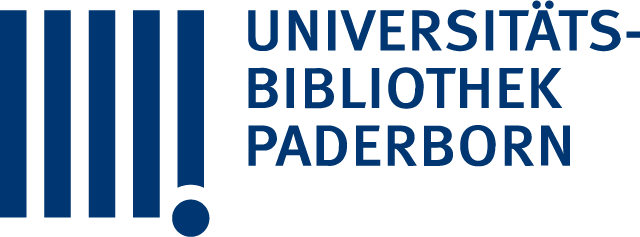Titelaufnahme
- TitelAdsorption and self-organization of organophosphonic monolayers on modified oxide covered surfaces / Peter Thissen
- Autor
- Erschienen
- HochschulschriftPaderborn, Univ., Diss., 2009
- SpracheEnglisch
- DokumenttypDissertation
- URN
- Social MediaShare
- Nachweis
- IIIF
Deutsch
Die vorliegende Arbeit befasst sich mit dem Korrosionsschutz technisch relevanter Oberflächen durch neuartig kombinierte Produktionsverfahren, die in der Wirtschaft eine hohe Nachhaltigkeit aufweisen. Am Anfang steht eine Konzeptentwicklung der plasmabasierten Konditionierung der chemischen und elektronischen Struktur von Passivschichten und der Untersuchung des Einflusses einer plasmamodifizierten Oxidschicht auf die Adsorption, Selbstorganisation und Adhäsion von organischen Haftvermittlern. Hierbei kann erstmals durch den Einsatz der Quartzkristallmikrowägung (QCM) für das System Octadecylphosphonsäure (ODPA) / Aluminiumoxid eine zehnfache Beschleunigung der Adsorptionsgeschwingigkeit aufgrund der Plasmamodifikation direkt nachgewiesen werden. Um ein größeres Spektrum an Forschungsmöglichkeiten zu erhalten, werden die zu untersuchenden Modellsysteme erweitert auf Aluminiumoxid Einkristalle mit verschiedenen Oberflächenorientierungen einerseits, andererseits auf Zinkaluminium-Legierungen, die ihre Anwendung als Stahlüberzug in vielen Bereichen haben. Dabei werden vor allem die Bildung und Langzeitstabilität der als Self-Assembled Monolayer (SAM) adsorbierten ODPA auf den verschiedenen oxidbedeckten Aluminiumoberflächen fokussiert. Sowohl bei der Entstehung als auch bei der Stabilität der ODPA Monolayer zeigen sich klare Unterschiede auf den verschiedenen Oberflächen; viele können durch die Weiterentwicklung der bestehenden Bindungsmodelle für die Wechselwirkung zwischen ODPA und Aluminiumoxid verstanden werden. Bei der Bildung einer ODPA Monolage, die als Haftvermittler auf den gewählten Stahlüberzügen HDG, Galfan und Galvalume fungieren kann, kann gezeigt werden, dass ein Aluminiumgehalt < 0.5% (HDG) zur Bildung einer Fällungsschicht und nicht mehr zur Selbstorganisation der ODPA auf der Oberfläche führt. Die Stabilität der Bindung zwischen ODPA und Aluminiumoxid im wässrigen Medium wird hauptsächlich von drei Faktoren beeinflusst, der Grenzflächen-Wechselwirkung, der freien Adsorptionsenergie im Vergleich zu Wasser und der atomaren Geometrie der Oberfläche. Schließlich wird durch den Einsatz einkristalliner Modellsysteme der Brückenschlag in die moderne Quantenmechanik geschafft. Für das System Phosphonsäure, adsorbiert als SAM auf Aluminiumoxid, werden die bestehenden Modelle aufgegriffen, zudem wird das Spektrum durch die Arbeit auf Einkristallen und einen theoretischen Ansatz erweitert. Für die Zukunft kann nur eine Kombination aus Grundlagenforschung, sowohl experimentell als auch theoretisch, und direkten Anbindungsversuchen mit der Industrie der Schlüssel zu fundamentalem Verständnis und ausreichendem Fortschritt sein.
English
The dissertation mainly deals with the protection of corrosion by novel combination of production processes which have a high sustainability in the economy. Topics like effects of the plasma modification on the adsorption kinetics of adhesion promoters, investigations on the adhesion promoters as corrosion inhibitors, and the influence of the surface chemistry on the stability of adsorbed adhesion promoters are brought into focus. It is shown, that plasma modification can influence the electronic and geometric parameters of the passive layers and thereby prevent corrosion, as well as the adsorption process of the adhesion promoter. The quartz crystal microweighing (QCM) is applied for the first time as a method for the determination of adsorption kinetics of organophosphonic acids on aluminum. Investigations of the adhesion promoters adsorbed on passive layers lead to the conclusion, that a further adsorption of water can be reduced but the diffusion itself to the passive layer cannot be hindered. The variation of surfaces and alloy composition has shown that adhesion promoters have to be adapted to the parameters of subject system to reach certain stability. The stability of the resulting bonding is mainly based on three competing influences, namely interfacial bonding types, adsorption free energies in competition with water and the involved adsorption geometries. By the introduction of new single crystalline model systems a gap between the modern theory and experimental data can be bridged. For water-rich conditions the formation of the adsorbing water is predicted by density functional theory (DFT) and proven by temperature programmed desorption (TPD) spectroscopy. In one can say that phosphonic acids are the most promising candidates as adhesion promoters for aluminum and alloys that form up oxide covered aluminum surfaces. Furthermore, the plasma modification is an efficient process for cleaning and changing the surface parameters in electronic and geometric way, which facilitates the possibility to tailor the surface chemistry. For the future, only a combination of basics research on the one hand, and direct cooperation with industry on the other hand, can be the key for fundamental comprehension and adequate progress.
- Das PDF-Dokument wurde 51 mal heruntergeladen.

